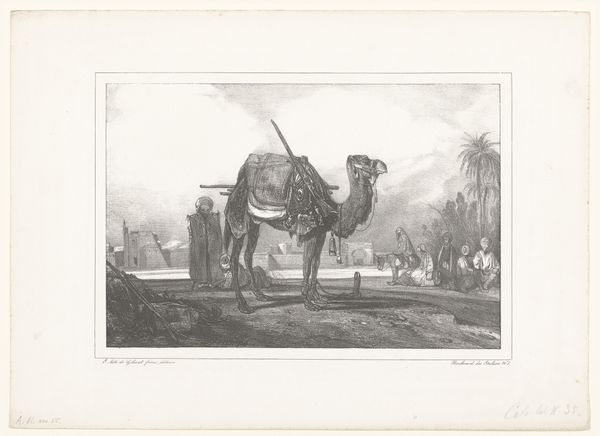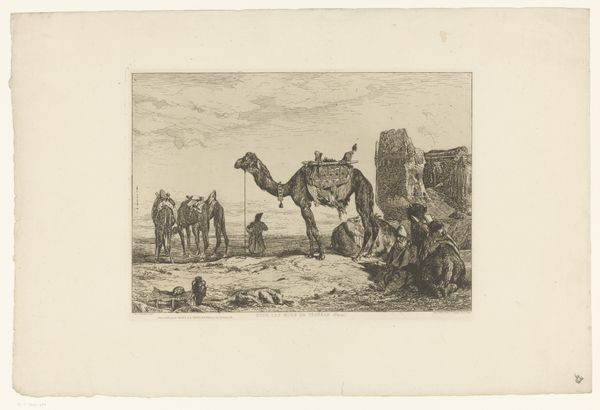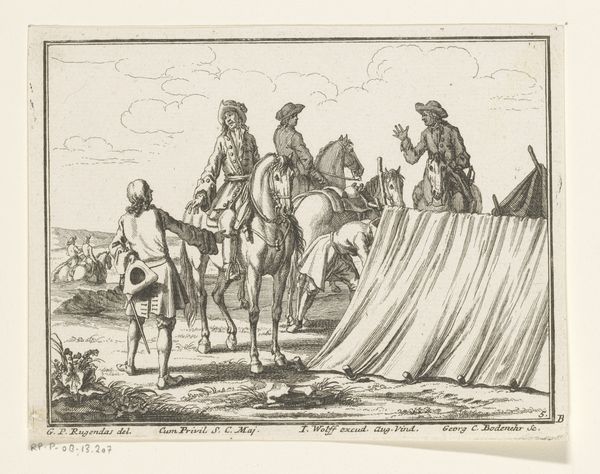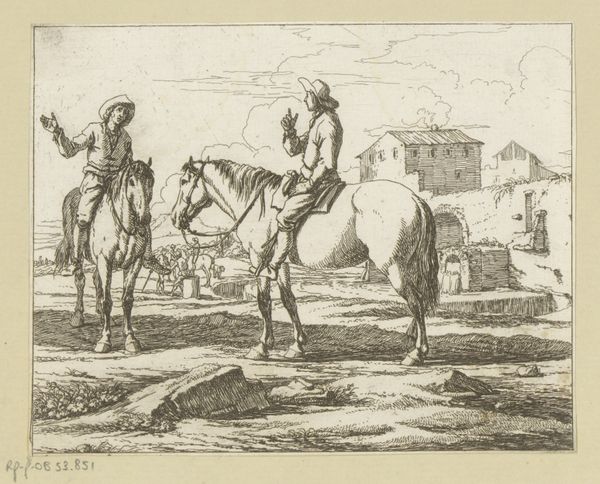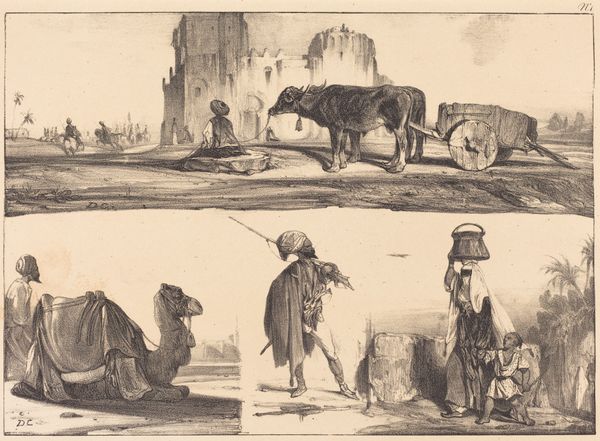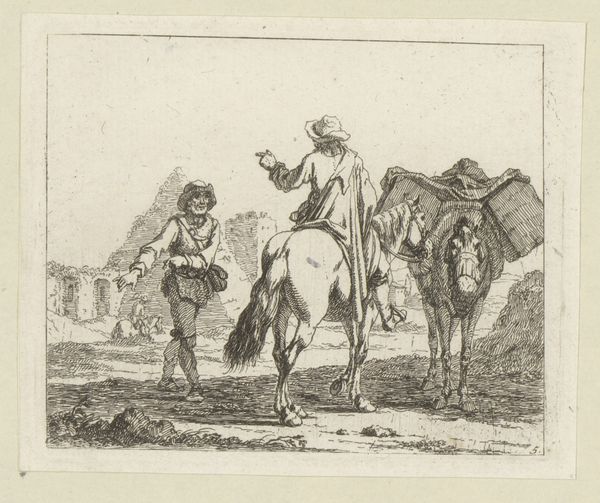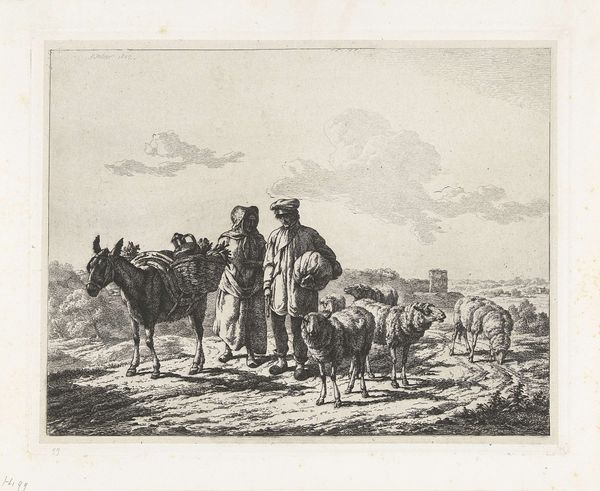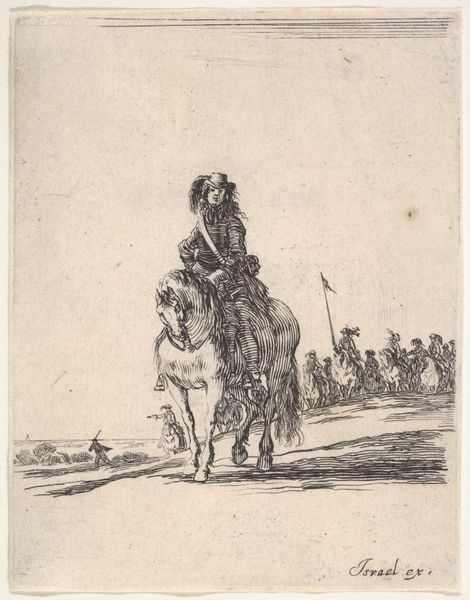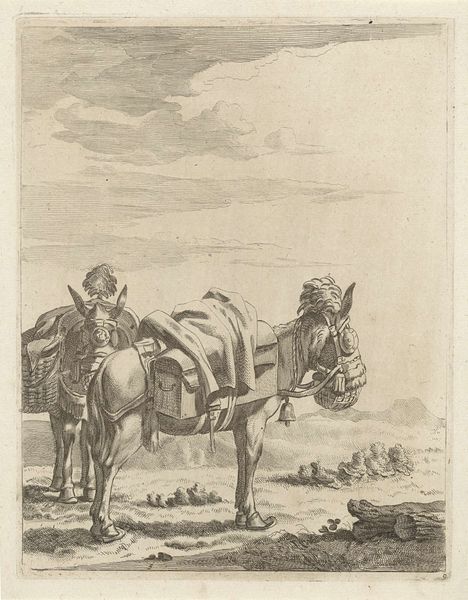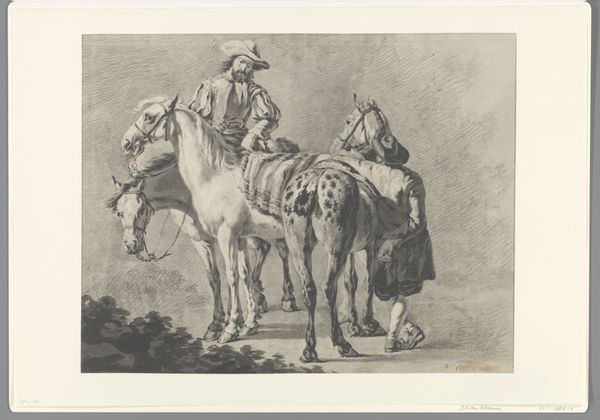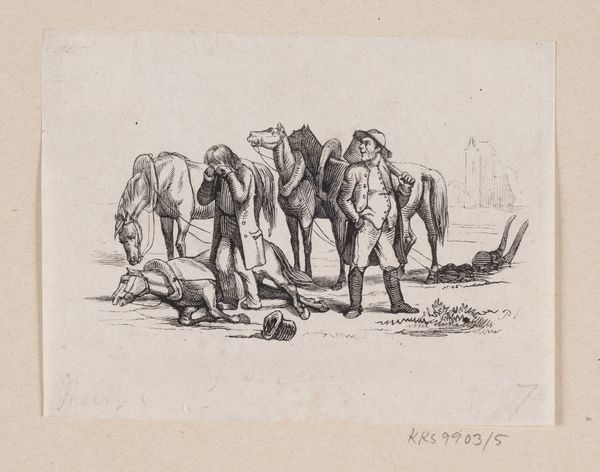
drawing, print, pencil
#
drawing
# print
#
landscape
#
figuration
#
pencil drawing
#
romanticism
#
pencil
#
orientalism
Dimensions: plate: 18 x 26.9 cm (7 1/16 x 10 9/16 in.) sheet: 27 x 36 cm (10 5/8 x 14 3/16 in.)
Copyright: National Gallery of Art: CC0 1.0
Curator: Alexandre-Gabriel Decamps's "Camel and Arabs," created around the mid-19th century, is a study in pencil, showcasing an Orientalist sensibility. The piece has an air of patient expectancy about it, doesn’t it? Editor: Absolutely. The subdued greyscale palette gives it a sort of historical, sepia-toned feel even though it’s just pencil on paper. It really sets a contemplative mood. Curator: It’s interesting to think about the artist’s hand and eye, isn’t it? The very specific choice to use graphite on paper. Not paint, not a grand canvas, but an accessible, almost documentary approach. What does that say about Decamps’ intentions in rendering this scene? The paper itself, probably industrially made even then, provided a neutral ground for him to recreate a "distant" land, imbuing the scene with a sense of realism while retaining its exotic allure. Editor: For me, the central figure is undoubtedly the camel, so elaborately adorned, and seemingly weighed down with equipment and possibly weapons. I keep thinking about the camel as this resilient, almost spiritual vessel in harsh environments, a long standing symbol of trade, endurance, and survival within Middle Eastern cultures. It’s not merely an animal, is it? It carries so much historical weight. Curator: Indeed, the accoutrements layered onto the camel are just as informative as the beast itself. The saddle, the rifle strapped to its back...these aren’t romantic additions but elements reflecting travel and perhaps military campaigns. The contrast of "Eastern" conveyance burdened by "Western" technology speaks volumes about colonial influence, suggesting that it might also offer an exploration into the era’s social and economic shifts. Editor: The lounging figures in the background also grab my attention; they don't appear particularly active or hurried. I get the feeling that these figures are not just placed to provide depth and atmosphere. Their relative repose subtly juxtaposes against the burdens the camel is designed to carry, almost giving you a sense of societal weight. Curator: The labor implied is critical. Decamps’ focus brings to the forefront the realities of transport and even possible conflicts during that period. And pencil drawing, usually seen as preparatory work for grander artistic ambitions, is transformed into an effective commentary itself here. Editor: In a world increasingly consumed by visual symbols, revisiting the imagery, like "Camel and Arabs", enables us to think about their lasting implications, perhaps even challenge assumptions about representation. Curator: Well said. Investigating the context behind artistic choices certainly gives one a deeper appreciation for even a simple medium like a pencil drawing.
Comments
No comments
Be the first to comment and join the conversation on the ultimate creative platform.
